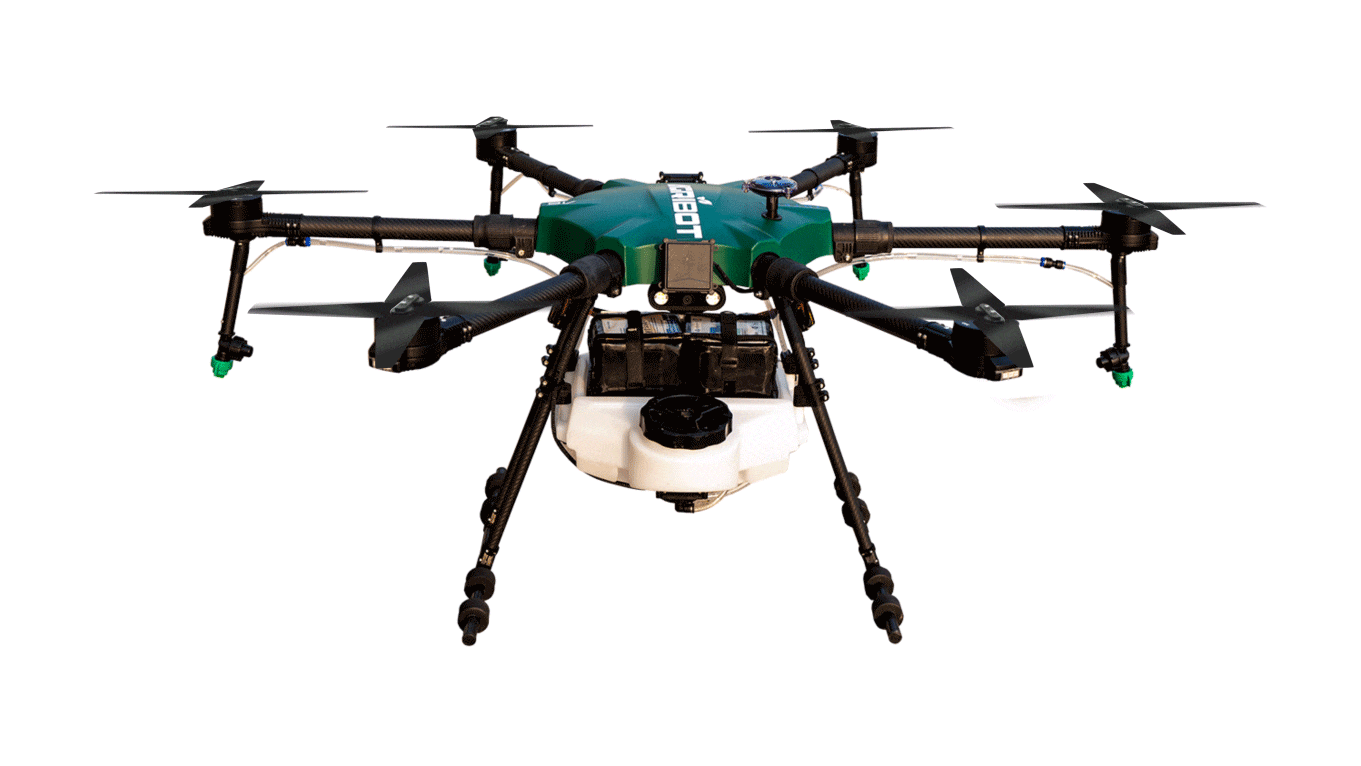
What is Kisan Drone? Uses, Benefits, Price, Subsidy, Govt. Scheme
Discover the transformative impact of Kisan Drones on Indian agriculture. Launched by Hon’ble Prime Minister and embedded with cutting-edge technology, these drones facilitate crop assessment, digitise land records, and optimise insecticide spraying. From the initiation of the Kisan Drone project in 2016 to the launch at 100 locations, the article explores the evolution and significance of this modern farming initiative. It touches upon crucial aspects like the integration of Artificial Intelligence and the importance of supporting agri-startups in scaling up drone technology.
What is the Kisan Drone?

The Kisan Drone, initiated in 2016 by the Indian Council of Agricultural Research (ICAR) and the Indian Agricultural Research Institute (IARI), employs indigenous drone-based systems for crop and soil health monitoring. Integrated with satellite technologies, it provides real-time data for efficient land and crop assessment, damage detection, and post-event management. In March 2021, the Ministry of Civil Aviation (MoCA) introduced the Drone Rules, 2021, allowing drone usage in agricultural areas under the Pradhan Mantri Fasal Bima Scheme (PMFBY). The Finance Minister highlighted the promotion of ‘Kisan Drones’ in the 2022-23 budget, emphasising their role in crop assessment and digitising land records. Prime Minister Modi officially launched Kisan Drones on February 19, 2022, highlighting their transformative impact on agriculture. He stressed the importance of supporting agri-startups to scale up drone technology in agriculture.
What are the Kisan Drone Benefits?
The integration of UAVs or drones has the potential to transform Indian agriculture, ensuring food security. Drones are employed for soil and crop nutrient analysis, optimising operations, and enhancing crop production. Here are the Kisan Drone benefits:
Spraying of liquid fertilisers and agrochemicals on crops:
- Drones can spray liquid forms of fertilisers and agrochemicals efficiently.
- Significantly larger areas are covered per day compared to traditional sprayers.
- Substantial water savings, up to 80-90%, depending on the drone’s sprayer system.
- Various sprayer nozzles are available for different concentrations.
Efficient Nutrient Assessment/Mapping:
- Real-time site-specific nutrient management.
- UAVs provide comprehensive field properties quickly, aiding the precise and timely application of deficient nutrients.
- High-resolution images captured by drones facilitate cloud/software analysis for prescription maps.
- Precision in regulating input delivery to enhance crop growth.
Labour Alleviation:
- Drones reduce labour pressure in tasks like fertiliser application, saving time and increasing daily crop coverage.
- Farmers can utilise saved time for other activities and respond promptly to agricultural challenges.
- Labour dependency is not required
Government Initiatives to Boost Drone Usage in Agriculture
The Ministry of Agriculture and Farmers Welfare amended guidelines under the “Sub-Mission on Agricultural Mechanisation” to provide grants for drone purchases by institutes and organisations for large-scale demonstrations on farmers’ fields. The Ministry urged various Ministries, including Home Affairs, to promote drone use in agriculture, medicine delivery, mining, surveillance, and more.
- Drone Rules, 2021, categorised drone operations into red, yellow, and green zones, with permissions required for red and yellow zones.
- No permission was needed for drone operations in green zones, covering a majority of current drone operations.
What are the Key Considerations for Kisan Drones?
Exploring the field of Kisan Drones unveils crucial aspects. From flying heights and license requisites to weather resilience and costs, these considerations shape the landscape of agricultural drone implementation.
- Flying Height: Drones operate at 50-100m; For agricultural spray, we can keep it around 2-3m above the crop canopy and special authorisation is needed beyond 50m.
- License Requirements: For non-commercial use, no pilot license is required for nano and micro drones under new government rules.
- Weather Conditions: Drones can fly in any weather, but image quality may suffer during rain.
- Distances Covered: Depends on drone capability; fixed-wing drones cover more area per flight (e.g., 50 min flight time covers up to 12 km).
- Drone Cost: Standard drones for public use start at Rs. 3.45 lakh; agricultural drone ranges around Rs. 7.5 lakh- 12.0 lakh for basic models and start at Rs. 15.0 lakhs for high-tech agricultural drones.
Also Read:
- Application of Drones in Indian Agriculture
- Drones for Spraying Pesticides
- Farming Drones for Crop Monitoring
- How Drone Technology Is Bringing Environmental Benefits To Farms
Kisan Drone Uses for Farmers

Image Source: https://www.agrotechblog.com/2023/05/precision-agriculture-revolution-in.html
Drones play a pivotal role in transforming raw data into valuable insights for farmers through the application of specialised algorithms. These algorithms extract a range of information from the images captured by drones, offering farmers a comprehensive understanding of their fields. Some key pieces of information derived from these images include:
- Plant Counting: Drones facilitate the assessment of various plant metrics, including plant size, plot statistics, stand number, compromised plots, and planter skips. This data aids farmers in gauging the overall health and distribution of their crops.
- Plant Height: Accurate measurements of crop height and density are provided, offering insights into the growth patterns and overall development of the plants.
- Vegetation Indices: Drones enable the calculation of vegetation indices, providing information on leaf area, anomaly detection, treatment efficacy, infestations, and phenology. This data helps farmers identify areas that may require special attention or treatment.
- Water Needs: Drones contribute to monitoring water requirements by detecting damage or areas prone to drown out. This information is crucial for optimising irrigation practices and ensuring the efficient use of water resources.
Kisan Drone Scheme
The Kisan Drone Scheme, introduced by Hon’ble Prime Minister, signifies a significant stride towards modernising agriculture throughout India. The scheme’s primary goal is to empower farmers by utilising drones to streamline tasks like spraying, reduce labour and time investments and boost farmers’ income. The government extends support to farmers, facilitating the optimal utilisation of this initiative.
Key Features of the Kisan Drone Scheme

Image Source: https://www.idtechex.com/fr/research-article/monsanto-case-reaffirms-that-robotics-is-the-future-of-agrochemicals/15126
The Kisan Drone Scheme not only leverages cutting-edge technology but also implements strategic subsidies to make this agricultural innovation accessible and beneficial for farmers across the nation.
- Drone Manufacturer: The drones for the Kisan Drone Scheme is done by a Indian drone manufacturer.
- Drone Capacity: These drones boast a high capacity ranging from 5 to 25 kilograms.
- Spraying Time: A notable efficiency feature, the drones take less than 10 minutes to spray pesticides over one acre of land.
- Subsidy for Farmer Groups: Farmer groups or organisations can avail of a subsidy of up to 75% of the overall Kisan Drone price depending on location inclusion.
- Individual Farmer Subsidy: When purchased for personal use, individual farmers receive a substantial grant, covering around 40% to 50% of the drone cost.
- Grant for Small, Marginal Farmers, and Women: Eligible individuals in this category can receive a grant of approximately Rs. 50,000.
- Availability: The drones are accessible at Krishi Vigyan Kendras, ensuring widespread availability for farmers.
Kisan Drone Subsidy Programme
Explore the transformative potential of the Kisan Drone Subsidy Programme, fostering agricultural innovation and sustainability for varied stakeholders, with subsidy categories and eligibility criteria:
- For Krishi Vigyan Kendras, Farm Machinery Training and Testing Institutes, Indian Council of Agricultural Research (ICAR) institutes, and State Agriculture Universities:
- Grant: Up to 100% of the cost of an agriculture drone or a maximum of Rs.10 lakhs.
- For Agriculture Graduates establishing Custom Hiring Centers (CHCs):
- Subsidy: 50% of the basic cost of a drone or up to Rs.5 lakhs.
- For Farmer Producers Organisations (FPOs) and Rural Entrepreneurs:
- If drones are used solely for demonstration purposes, FPOs are eligible for a drone subsidy of 75% of the drone’s cost.
- In cases where drones are utilised exclusively for demonstration purposes, FPOs qualify for a subsidy amounting to 75% of the drone’s cost.
How to Apply for Kisan Drone Scheme?
To initiate the application process for the Kisan Drone Scheme, follow these steps, similar to applying for any modern agricultural machinery.
- Step 1: Visit the official website at, https://agrimachinery.nic.in/Index/Index.

- Step 2: Go to the registration section on the website.
- Step 3: Among the available options, select “Farmer.”

- Step 4: Carefully fill in the required details in the provided fields and apply.

What are the Documents Required for Application?

Completing the application with accurate and verified documentation is crucial for the smooth processing of your Kisan Drone Scheme application.
- Aadhaar Card: Ensure you have a valid Aadhaar card.
- Right to Land (ROR): This document is necessary for recording land details.
- Farmer’s Passport Size Photo: Submit a recent passport-size photograph of the farmer.
- Bank Pass Book Copy: Provide a photocopy of the first page of the bank passbook.
- ID Proof Copy: Include a copy of any valid identification proof.
- Certificate of Caste Category: If applicable (for SC/ST/OBC applicants), attach a copy of the caste category certificate.
Conclusion
As drones redefine precision agriculture, the Kisan Drone Scheme is a pivotal force in modernising farming practices. The key Kisan Drone benefits, government initiatives, and considerations for Kisan Drones are illuminated, presenting a comprehensive overview. The scheme’s implementation, subsidy programs, and the step-by-step guide on applying for the Kisan Drone Scheme are detailed, ensuring farmers harness the full potential of this technological leap. With real-time insights and efficient nutrient management, Kisan Drones empower farmers, ushering in a new era of sustainable and tech-driven agriculture.
FAQs
Q1. Can you suggest any Kisan Drone company in India?
Ans: One of the major drone manufacturing companies in India is IoTechWorld Avigation.
Q2. Which government is implementing the Kisan Drone Yojana?
Ans: Kisan Drone Yojana is a Central Government scheme.
Q3. Is there a helpline for assistance related to the scheme?
Ans: Yes, for any queries or assistance, you can contact the helpline at 011-23381092.
Q4. What is the allocated fund for the Kisan Drone Yojana?
Ans: The scheme has been allocated a Rs. 200 crore fund.
Q5. Are there regulatory considerations for drone imaging?
Ans: Yes, drone imaging is subject to regulations, including airspace restrictions and privacy concerns, which need to be adhered to for legal and ethical use.

